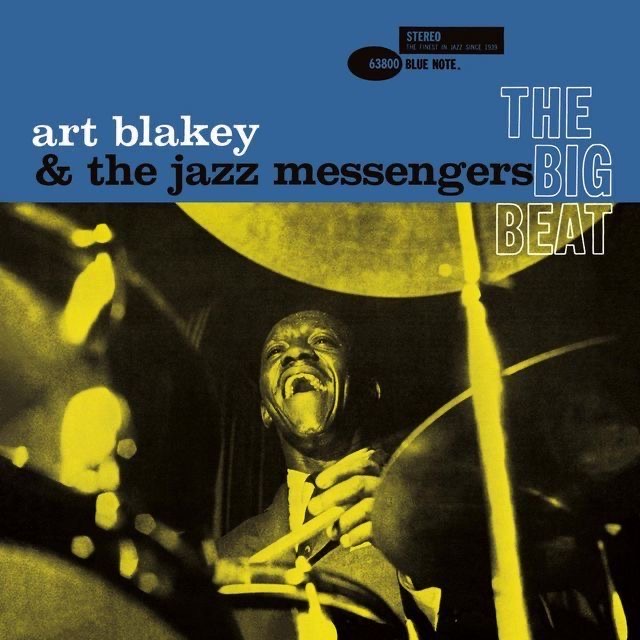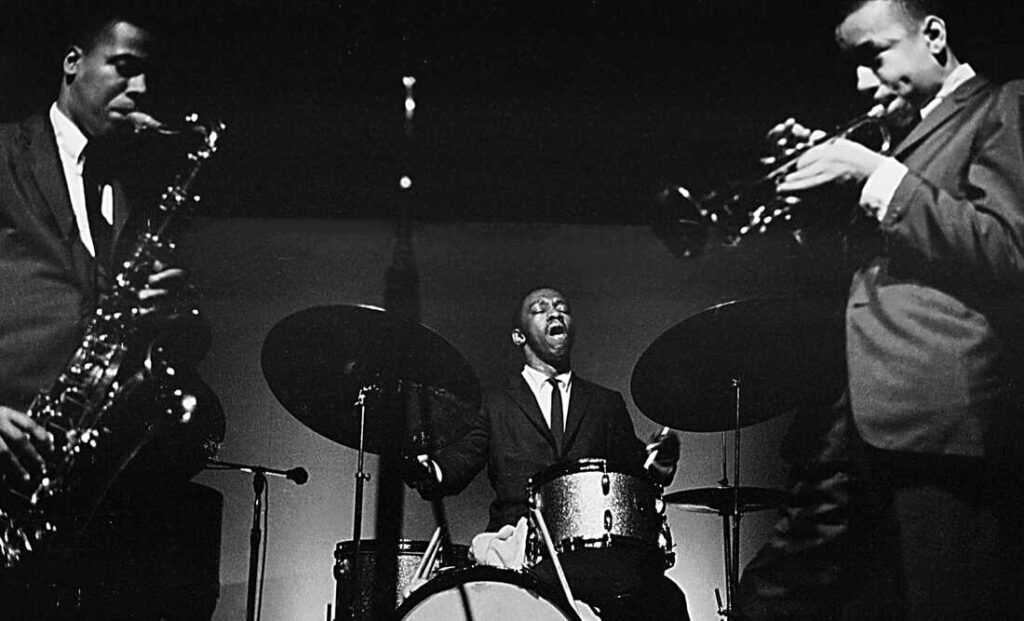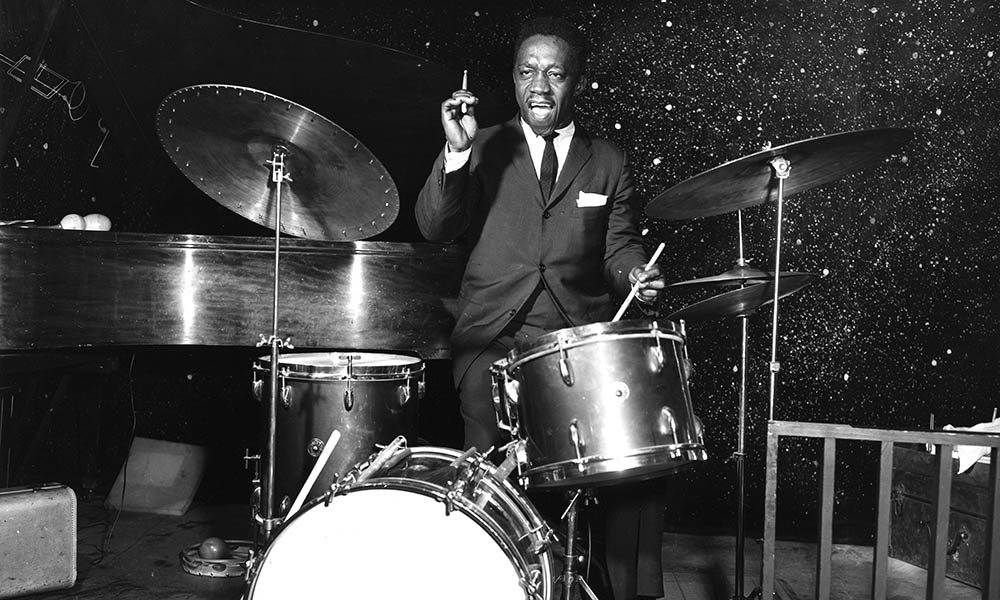Dive into the Power & Passion of ‘Tenor Madness
In the vast panorama of jazz, Sonny Rollins’ “Tenor…
As the driving rhythms and punchy horns filled my ears, I couldn’t help but feel transported to a different era of jazz, a time when artists like Art Blakey and the Jazz Messengers were changing the game with their innovative sound. This feeling was brought on by none other than their 1960 album “The Big Beat,” a standout in Blue Note’s Jazz Messenger series.

Blakey, a true trailblazer in the jazz world, had assembled a team of talented musicians for this album, including Wayne Shorter on tenor saxophone, Lee Morgan on trumpet, Bobby Timmons on piano, and Jymie Merritt on bass. Each musician brought their unique style to the album, creating a sound that was both cohesive and dynamic.

Shorter and Morgan, in particular, stood out with their growing impact as players and writers. Shorter’s talent as a writer was showcased with his composition “Sakeena’s Vision,” a minorish tune that he wrote as a tribute to his daughter. Morgan’s technical fluency and witty playing style were on full display throughout the album, adding a touch of humor and levity to the overall sound.

One of my favorite tracks on the album is “Dat Dere,” which is a sequel to Timmons’ popular composition “This Here.” With its gospel-inspired sound, this song is a perfect example of Blakey’s influence on the modern jazz sound. The driving rhythm and soulful piano solo by Timmons create a lively and infectious energy that is hard to resist.
Another standout track on the album is “The Chess Players,” which features Shorter’s masterful playing on the tenor saxophone. The stop-and-go melody of the song, along with its use of fourths in the progression, creates a sense of tension and release that is both exciting and satisfying.
Throughout the album, the musicians play with a level of skill and precision that is nothing short of impressive. Their musical contributions to each track are essential to creating the classic jazz sound that Blakey was known for. Merritt’s soft touch and lightning-fast playing style, in particular, add an extra layer of complexity to the sound, while Timmons’ neo-gospel piano playing style perfectly complements the overall feel of the album.
The overall impact of “The Big Beat” can be attributed to its driving rhythms and punchy horns, which create a sense of urgency and excitement in the listener. Blakey’s use of polyrhythms and accents behind the soloists adds an extra layer of complexity and depth to the sound, creating a truly unique and dynamic listening experience.
The musical style and themes explored in the album are a reflection of Blakey’s commitment to innovation and his willingness to push the boundaries of the genre. The album showcases a blend of different styles, including gospel, blues, and bebop, creating a sound that is both accessible and challenging.
Upon its release, “The Big Beat” was met with critical acclaim and solidified Blakey’s place as one of the most influential jazz musicians of his time. Its impact is still felt today, with many modern-day jazz musicians citing Blakey as a major influence on their sound and style.
Blakey’s influence on the modern jazz musician cannot be overstated. His commitment to innovation and his willingness to push the boundaries of the genre have paved the way for generations of musicians to come. Today, his legacy lives on through the countless musicians he inspired and the albums he created, including the timeless “The Big Beat.”
In conclusion, “The Big Beat” is a true masterpiece of jazz music, showcasing the incredible talent and innovation of Art Blakey and the Jazz Messengers. Its impact on the genre is still felt today, and its classic jazz sound continues to inspire musicians and listeners alike. For anyone looking to delve into the world of jazz or to expand their jazz collection, this album is an absolute must-listen. Its driving rhythms and punchy horns create an unparalleled energy that is sure to captivate and inspire.
Furthermore, the legacy of Art Blakey and the Jazz Messengers lives on in the modern-day jazz scene. Many contemporary jazz musicians cite Blakey as a major influence on their music and career. His focus on the importance of musical education and the development of young talent is a testament to his lasting impact on the genre.
Overall, “The Big Beat” is a timeless classic that deserves a place in any jazz lover’s collection. Its dynamic energy and masterful musicianship are a true testament to the greatness of Art Blakey and the Jazz Messengers. As we continue to celebrate and explore the rich history of jazz music, albums like “The Big Beat” serve as a reminder of the incredible talent and innovation that have come before us, and the endless possibilities that lie ahead.